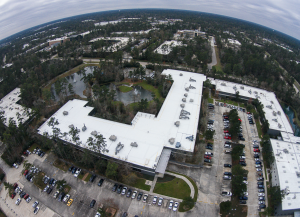
The roof was replaced on Huntsman Corporation’s Advanced Technology Center, an L-shaped, 70,000-square-foot facility housing expensive equipment and research labs.
For example, many commercial buildings seem only superficially different from those built a generation ago when seen from a distance. But, from behind the glass curtain walls and updated building amenities, we may not notice the disruptive technologies that have substantially improved building systems in recent years. Informed by sophisticated research and utilizing advanced components, cutting-edge building materials are thinner, stronger and more resilient than traditional products. Adopting them in both new construction and renovation can appreciably improve building performance, while also decreasing environmental impact. These products are particularly attractive to forward-looking companies interested in buildings that will prove cost-effective over the long term.
A Case in Point
When the Huntsman Corporation began considering facility improvements for its Huntsman Advanced Technology Center (HATC) in The Woodlands, Texas, they decided to embrace the most innovative materials available. This four-building campus, located about 35 miles north of Houston, serves as the company’s leading research and development facility in the Americas, so it is appropriate that it be built with products as advanced as the technology it houses. Replacing the aging PVC roof on Building 1 was a key element in this upgrade.
After more than two decades of exposure to the Texas heat, the roof was approaching the end of its useful life. With expensive equipment and valuable research in labs throughout the building, Huntsman didn’t want to take any chances in modernizing the L-shaped, 70,000-square foot facility. With the added incentive of receiving the highest-level certification from its insurer, the company decided to remove and completely replace the existing roof with state-of-the-art materials.
Commercial roofs in Texas are required to have an insulation R-value of 20 or higher, so simply replacing the existing membrane and lightweight insulating concrete on a metal deck that the building had used before with the same materials would not have sufficed. In addition, current codes which say that old roofs need to be brought up to current code when doing a tear-off job. After reviewing the options, they chose to install thermoplastic polyolefin (TPO) membrane roofing over high-density polyiso cover board.
The polyiso cover boards are lightweight and easy to cut, which reduces both time and labor costs for installation. They add strength and protection to a roofing system, enhancing the system’s long-term performance. They can be shipped with approximately three times more square feet per truckload than gypsum products, so fewer trucks are needed, leading to fuel and transportation savings. Plus, they can be cut without specialized tools and workers don’t have to worry about the dust that is created when sawing, as they would with other types of cover boards. And most importantly, these high-density boards are based on proven technology.
Drawn to polyiso for its high R-value per inch of thickness, compressive strength, impressive fire-, wind- and moisture-resistance, long-term durability, and low environmental impact, Huntsman partnered with roof mechanics experienced in working with these materials and committed to both safety and quality.
If the original installers of the previous roof 22-years earlier had witnessed this new project, they would have been amazed. Instead of hoisting heavy materials up ladders, pallets are deposited on the roof by crane. Boards are attached with fasteners and plates or foam adhesives to the deck, and robotic welders seal the seams in the TPO membrane.
The new roof is resistant to ultraviolet, ozone and chemical exposure, which contributes to a lifespan of more than 20 years, while being virtually maintenance-free. Workers who access the roof to remove debris from the tall trees on the HATC campus can easily stay on the safety-taped walk pad areas. The roof materials are all recyclable later, leading to a very low environmental impact.
Increasing the thermal resistance to an impressive R-21 for the combined roof system, the building now exceeds local, state and international building codes. This added insulation and the reflective white surface of the new roof are going to lower energy consumption and lead to greater indoor comfort and a decreased load on HVAC systems. The roof is much less susceptible to the mold, mildew, and will help prevent water from pooling and ponding as it did on the old roof.
A new commercial roof is a substantial investment. Luckily, with all the cost savings inherent in both the installation process and the whole-life use of high-density polyiso cover boards, companies don’t have to forego state-of-the-art materials for financial reasons. Factoring in the ease of installation (from cutting to less dust) and weight of the cover boards, retrofitting an older building with updated roof systems can be a win-win for both clients and crews.
PHOTOS: HUNTSMAN CORPORATION

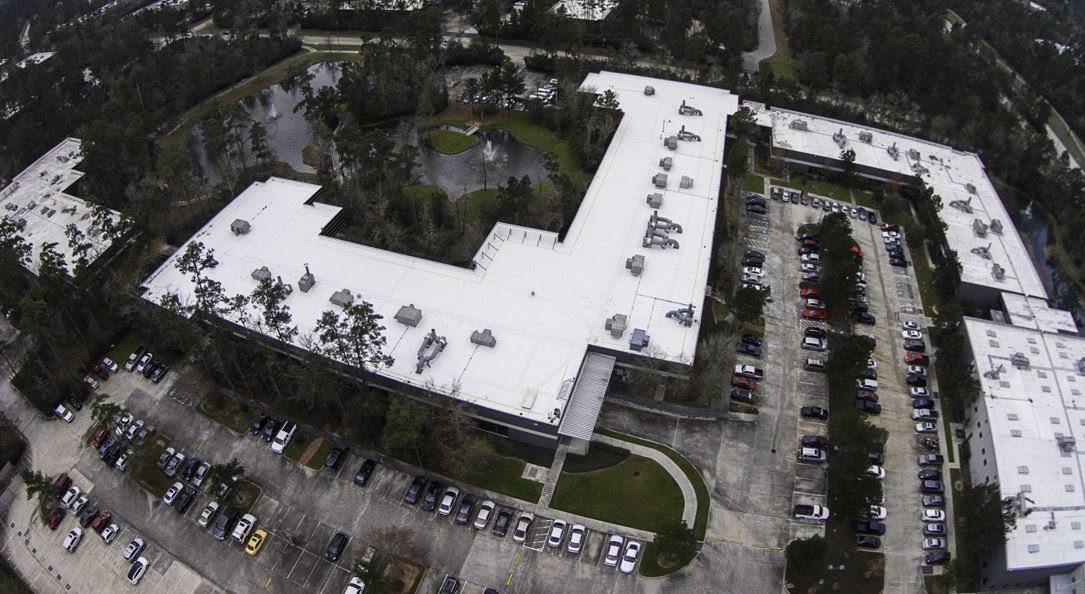
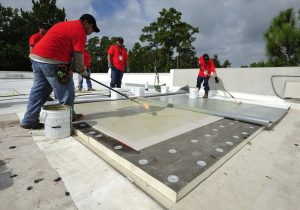
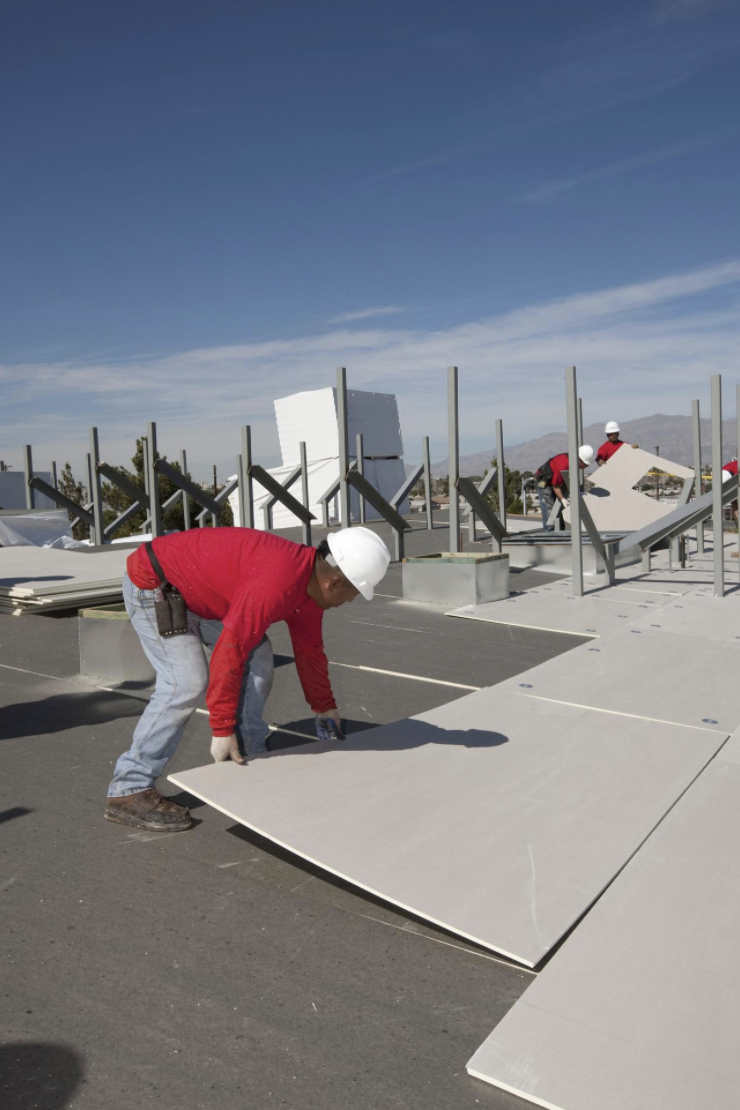

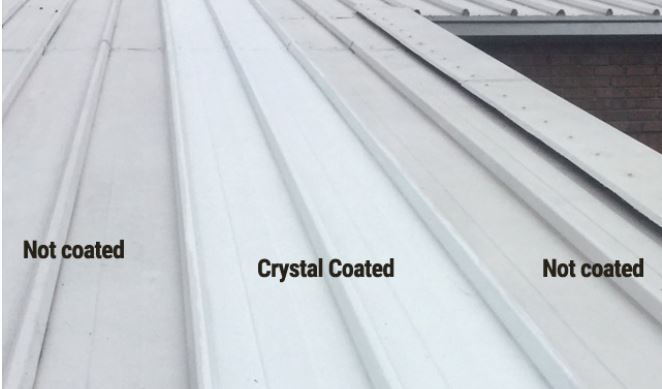
Be the first to comment on "Retrofit Roofing Project Highlights Advancements in Building Materials and Methods"